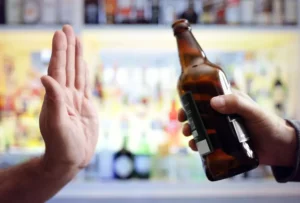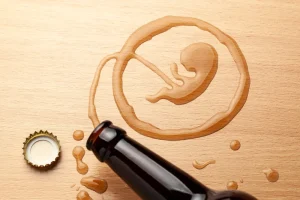
For example, how easily available alcohol is, how much it costs, and pressure from friends, family or colleagues to drink. If you’re worried that you have any of these symptoms, talk to a health professional at your GP surgery or seek further information from one of the organisations at the bottom of this page. If you don’t already have a supportive network, you can make new connections by joining social media communities dedicated to alcohol-free living. This process temporarily restores homeostasis, or chemical balance, in an effort to counteract the impact of long-term alcohol use on the brain. Alcohol-free cocktails and beer, along with cannabis-infused beverages, are gaining users.

3.3. Social problems
Being dependent on alcohol means a person feels they’re not able to function or survive without it and that drinking becomes an important – or sometimes the most important – factor in their life. Always consult your healthcare provider to ensure the information displayed on this page applies to your personal circumstances. By https://ecosoberhouse.com/ Sarah Bence, OTR/LBence is an occupational therapist with a range of work experience in mental healthcare settings. For those with alcohol use disorder, withdrawal is just the first (but very important) step on a long journey to recovery. These first few weeks are critical because they are when the risk of relapse is highest.
4.2. Psychological factors

This experimental design can be further modified by the use of discriminative contextual cues. If the responding is extinguished in these animals (i.e., they cease to respond because they receive neither the alcohol-related cues nor alcohol), presentation of a discriminative cue that previously signaled alcohol availability will reinstate alcohol-seeking behavior. Using alcohol during adolescence (from preteens to mid-20s) may affect brain development, symptoms of alcohol dependence making it more likely that they will be diagnosed with AUD later in life. However, most people with AUD—no matter their age or the severity of their alcohol problems—can benefit from treatment with behavioral health therapies, medications, or both. Before you decide to stop drinking, talk to a healthcare provider to determine what treatment options are available and whether you would benefit from medical supervision during detox.
What is alcohol use disorder?

Behavioral health treatment for alcohol problems is often (but not always) covered by insurance. In the United States, most states have low-cost or free rehabilitation programs for those who are uninsured. However, try not to have too many firm expectations, as symptoms can continue for multiple weeks in some people.
- The idea that altered forms of consciousness such as mania or alcohol can enhance creativity is a popular belief.
- Alcohol withdrawal symptoms range from mild but annoying to severe and life-threatening.
- High rates of depression and anxiety have been reported in adolescents with alcohol-use disorders, with increased rates of suicidality.
- Most of the data on the English population’s drinking patterns comes from the General Household Survey, the Health Survey for England and the Psychiatric Morbidity Survey (Craig et al., 2009; McManus et al., 2009; Robinson & Bulger, 2010).
- Also, as noted earlier, the risk with increasing levels of alcohol consumption is different for different health disorders.
- Approximately one third of specialist alcohol services exclusively provide treatment for people with alcohol problems, but the majority (58%) provide services for both drug and alcohol misuse.
In terms of productivity, alcohol contributes to absenteeism, accidents in the workplace and decline in work performance. Up to 17 million working days are lost annually in the UK due to alcohol-related absences and 58,000 working years are lost annually due to premature deaths related to alcohol (Leontaridi, 2003). Alcohol misuse can also lead to job loss and over 38,000 people of working age in England were claiming Incapacity Benefit with a diagnosis of ‘alcoholism’ – nearly 2% of all claimants (Deacon et al., 2007). The term ‘hazardous use’ appeared in the draft version of ICD–10 to indicate a pattern of substance use that increases the risk of harmful consequences for the user. Nevertheless it continues to be used by WHO in its public health programme (WHO, 2010a and 2010b). Alcohol presents particularly serious consequences in young people due to a higher level of vulnerability to the adverse effects of alcohol (see Section 2.12 on special populations).
Social learning theory also provides some explanations of increased risk of excessive drinking and the development of alcohol dependence. People can learn from families and peer groups through a process of modelling patterns of drinking and expectancies (beliefs) about the effects of alcohol. Teenagers with higher positive expectancies (for example, that drinking is pleasurable and desirable) are more likely to start drinking at an earlier age and to drink more heavily (Christiansen et al., 1989; Dunn & Goldman, 1998). Slips can be fueled by withdrawal symptoms, mental health challenges, and drug-related cues, such as spending time with old drinking partners or visiting old drinking locations. Triggers become engrained in addiction, so it’s valuable to recognize these cues, avoid them, and replace them with new behaviors, such as calling a sponsor or loved one when craving alcohol, which can help avoid a relapse. Relapse represents a major challenge to treatment efforts for people suffering from alcohol dependence.
Timeline of Alcohol Withdrawal
Alcohol Dependence vs. Alcohol Abuse: What’s the Difference?
- Hospital inpatient and day visits accounted for 44% of these total costs, whilst accident and emergency department visits and ambulance services accounted for 38%.
- The evidence suggests that harmful alcohol use and alcohol dependence have a wide range of causal factors, some of which interact with each other to increase risk.
- Unhealthy alcohol use includes any alcohol use that puts your health or safety at risk or causes other alcohol-related problems.
Leave a Reply